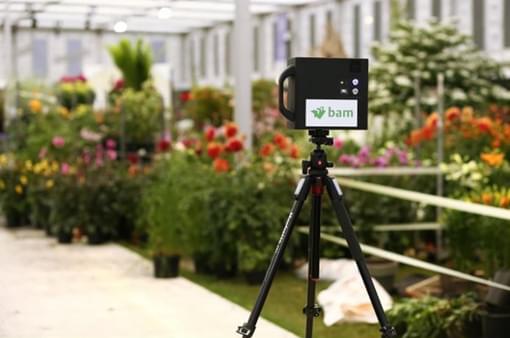How immersive technology is changing the world
Categories: Technology

Image courtesy of BAM
Immersive technologies such as virtual and augmented reality are currently taking the world by storm. Over the past three years, we’ve seen a huge interest in immersive technologies from the likes of advertising agencies, games developers, construction companies and more…Immersive technology is not a new concept. Experimentation with virtual and augmented reality has been taking place since the 1960s, hidden inside research facilities across the world.
The Sword of Damocles is considered by most to be one of the first virtual reality headsets. Built by Ivan Southerland and Bob Sproull in a laboratory at MIT, it was a large and somewhat dystopian looking device. The device was so heavy that it had to mounted to a mechanical arm attached to the ceiling when in use. When using the device, the users would be able to see a virtual environment, but since graphics technology was not very advanced, these were usually just simple wireframe rooms.
Immersive technology was further popularised by Star Trek’s Holodeck. In the hit sci-fi tv show, characters could enter a specific room and it would create an expansive virtual world that was so in-depth, it was almost identical to reality. Lots of people were excited by the thought that, one day, in the distant future, we may be able to recreate whole worlds inside a holodeck. In the 1990’s we saw devices like the Virtuality, which were smaller than previous headsets and aimed at consumer markets. The devices were placed in arcades across the world. Sadly, by 1998, most of these devices were left unused or taken out of use as they grew less popular.
Immersive tech takes off in gaming
Over the past five years, we have seen immersive technology making a comeback, playing a much larger role across many sectors, especially in the games industry. Graphics, processing and screen technologies have improved dramatically over the past decade and these advances have opened the door to create enthralling and immersive experiences. Being experts in storytelling and interactivity, this provided an opportunity for games makers to experiment with immersive technology in a new creative medium.
Following experiments by games developers and fellow innovators, we have seen the impact that using immersive technology can have on a user. Studies have suggested that being in an immersive environment may improve memory recall and increase pain thresholds.
How VR is moving into other industries?
Immersive technologies have been embraced by numerous industries such as brand advertising, engineering, education, medicine, car manufacturing and retail.
Standout examples of immersive technology being used include;
- BAM’s use of Matterport cameras to map out construction sites in 3D so they can be explored later in virtual reality.
- Jaguar Land Rover’s use of virtual and augmented reality in the prototyping phase when developing new cars.
- Walk Again Project using virtual reality to help paraplegic people regain partial sensation and control in their lower limbs.
The possibilities for immersive technology are seemingly limitless; the only potential barriers being the practicalities of the technology available. Small nuisances like cables, short battery life and graphics will be further improved upon as time goes on. No doubt this is just the beginning and it’s about to get a lot more exciting…




